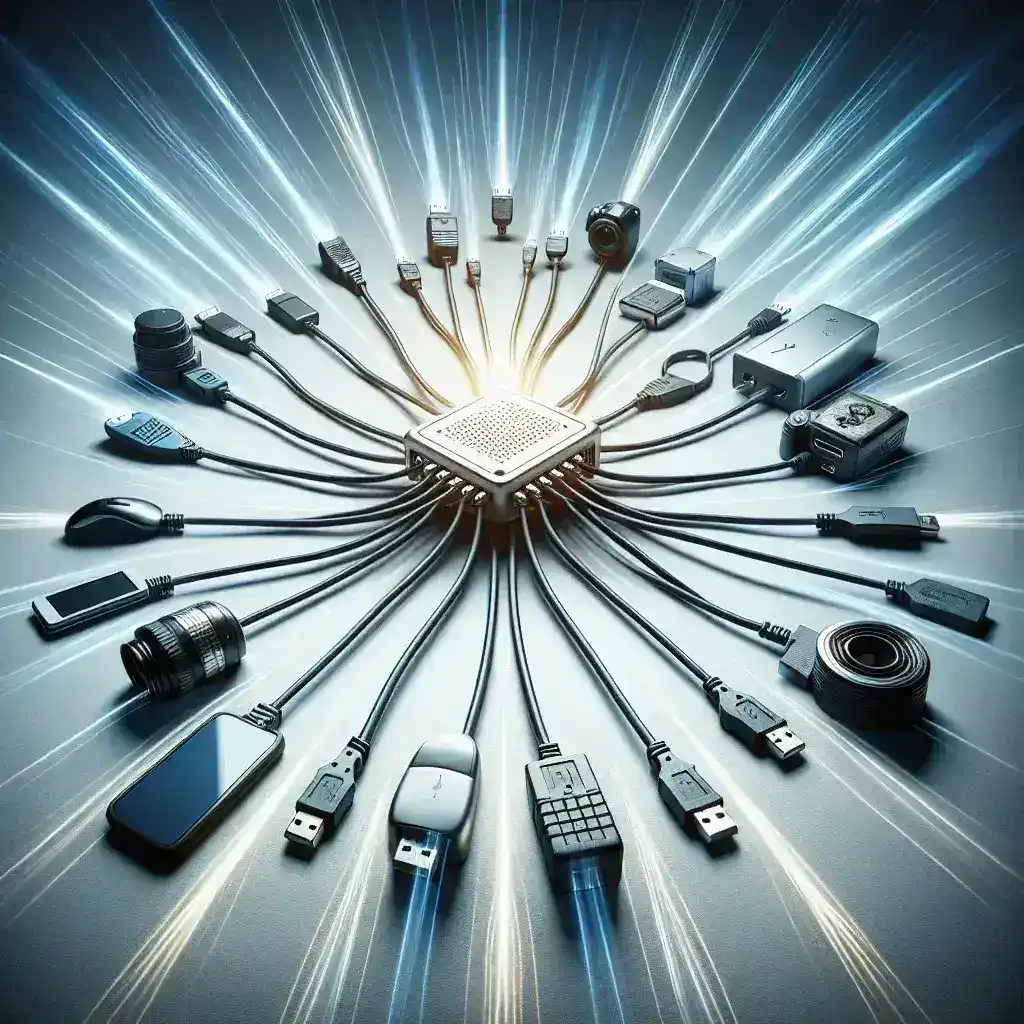As the digital world advances rapidly, the use of USB hubs has become increasingly prevalent for various electronic devices. From computers to gaming consoles, most users appreciate the convenience of connecting multiple devices efficiently. However, a common question arises: Can a USB hub affect the speed of connected devices? This article delves into the intricacies of USB hubs, their effect on data transmission speeds, and best practices for optimizing connectivity.
| Type of USB Hub | Max Speed | Power Supply |
|---|---|---|
| USB 2.0 Hub | 480 Mbps | Bus-powered / Self-powered |
| USB 3.0 Hub | 5 Gbps | Self-powered |
| USB 3.1 Hub | 10 Gbps | Self-powered |
| USB-C Hub | Up to 40 Gbps | Self-powered |
Understanding USB Hubs
USB hubs are devices that allow multiple USB devices to connect to a single USB port on a computer or other host devices. They serve as intermediaries, expanding the number of available ports and allowing for the simultaneous use of various peripherals like keyboards, mice, printers, and external drives. However, the type of USB hub used (USB 2.0, USB 3.0, USB 3.1, or USB-C) can significantly influence performance.
How USB Hubs Influence Data Speeds
The performance of a USB hub is primarily determined by its type, bandwidth capacity, and the number of connected devices. Below are crucial factors that can influence the speed:
1. Bandwidth Sharing
When multiple devices are connected through a USB hub, all devices share the available bandwidth. For instance, if you’re using a USB 2.0 hub that has a maximum transfer rate of 480 Mbps, and you connect four devices, the bandwidth gets divided among those devices:
- If all devices are actively transferring data, their speeds will be slower than if they were connected individually.
- If only one device is in use, it may approach the maximum speed.
2. Type of Hub
The type of hub directly influences the speed. As mentioned earlier, various USB standards offer different maximum speeds. Here’s a brief overview:
- USB 2.0: Offers a speed of up to 480 Mbps.
- USB 3.0: Significantly improves performance, allowing data transfer rates of up to 5 Gbps.
- USB 3.1: Ups the ante with speeds of up to 10 Gbps.
- USB-C: This technology allows for even higher speeds (up to 40 Gbps) and can also transmit power simultaneously.
3. Quality of Hub
The quality of a USB hub can directly impact performance. Quality hubs tend to have better components, result in less signal loss, and provide a more stable connection. Look for hubs from reputable brands, and consider:
- The construction materials
- Thermal management features
- Data integrity checks
4. Power Supply
Power supply plays a significant role in the performance of USB hubs. There are two types of power setups:
- Bus-powered: These hubs draw power from the host device. They are convenient but may not power high-demand devices effectively.
- Self-powered: These hubs have their own external power supply. They provide sufficient power for multiple devices, ensuring optimal performance without throttling speed.
Practical Considerations for USB Hub Usage
1. Choosing the Right Hub
Select a USB hub based on your needs. For high-speed data transfers, opt for a USB 3.0 or higher hub, especially if you frequently use external SSDs, high-resolution cameras, or other demanding peripherals.
2. Reduce Device Load
Minimize the number of devices connected to the hub simultaneously. If possible, connect bandwidth-heavy devices directly to the computer’s USB ports.
3. Keep Firmware Updated
Many USB hubs have firmware updates. Keeping them up to date can enhance compatibility with newer devices and improve performance.
4. Monitor Power Usage
For self-powered hubs, be aware of power limits. Overloading a hub can lead to device errors and slowdowns. Ensure your hub provides adequate power to all connected devices.
Real-World Examples
To illustrate how USB hubs affect device performance, consider the following scenarios:
Example 1: Gaming Usage
When connecting a gaming console with a USB hub, if a gamer connects a controller, external hard drive, and headset all using a USB 2.0 hub, the performance of the external hard drive may reduce significantly. Using a USB 3.0 hub in this scenario would minimize performance drops.
Example 2: Data Backup
For a user relying on an external hard drive for backing up critical data, connecting it through a bus-powered USB 2.0 hub while simultaneously running a printer will decrease the transfer speeds for file backups. Switching to a self-powered USB 3.0 hub can greatly enhance backup times.
Conclusion
In conclusion, a USB hub can indeed affect the speed of connected devices significantly. The impact depends on factors such as the hub’s type, its power capabilities, bandwidth sharing, and the quality of its construction. For optimal performance, it’s essential to choose the right hub and manage connected devices properly. By implementing these strategies, users can maintain fast data transfer rates and ensure an efficient workflow.

